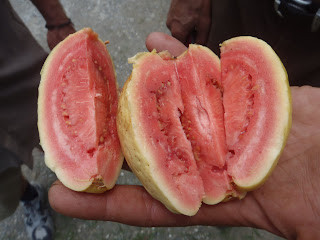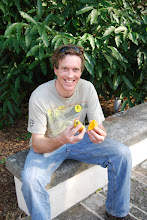 Ubiquitous throughout the Costa Rican landscape are fences. Nearly everyone has one as the fence is the clearest demarcation of one's private property. I recently did a Permaculture design for a client with a fenced-in property. As everyone knows, the primary purpose of a fence is to keep animals and unwanted people out of one's property. In the case of this client it is essential to have a fence as the neighboring horses would love to enter the property and devour all of the coconut palms and fruit trees that I have been planting. One central element of Permaculture is that any given element within a farm or home design should provide many functions. The existing fence on the property was built from concrete posts and four strands of barbed wire. This is highly utilitarian no doubt as these concrete posts will last for many years. So you may be wondering what other functions can a fence provide?
Ubiquitous throughout the Costa Rican landscape are fences. Nearly everyone has one as the fence is the clearest demarcation of one's private property. I recently did a Permaculture design for a client with a fenced-in property. As everyone knows, the primary purpose of a fence is to keep animals and unwanted people out of one's property. In the case of this client it is essential to have a fence as the neighboring horses would love to enter the property and devour all of the coconut palms and fruit trees that I have been planting. One central element of Permaculture is that any given element within a farm or home design should provide many functions. The existing fence on the property was built from concrete posts and four strands of barbed wire. This is highly utilitarian no doubt as these concrete posts will last for many years. So you may be wondering what other functions can a fence provide?In the process of Permaculturally retrofitting this fence I changed it in two significant ways. First , between each fence posts we planted a post of Madero Negro (Gliricida sepium, family Fabaceae). Here in the tropics we are lucky that certain tree species can be propagated by literally cutting a branch and sticking it in the ground. As a member of the Fabaceae family, Madero Negro has a symbiotic relationship with soil bacteria called Rhizobia. The Rhizobia remove gaseous Nitrogen from the air and convert into a form that the plants can uptake. In exchange, the plant provides the bacteria with sugars that it needs to live and reproduce. Thus, plants in the Fababceae family have leaves that are high in Nitrogen. As these posts begin to grow I will be able to coppice them, or prune them every two months and their abundant leaves will provide a Nitrogen rich mulch for the growing fruit trees. Additionally, when one prunes the branches, the trees slough some roots off or allows some roots to die. The roots are where the Nitrogewn fixation is occurring and therefore this sloughing off of roots also imports Nitrogen into the soil. But, that's not all there is to the benefits of this plant. Madero Negro leaves can be harvested and placed around one's home to kill fleas and ticks. It also makes attractive purple flowers which can be cooked and eaten. The trees create both microclimates which contribute to ecological diversity by opening distinct niches and provide an edge effect which also contributes to ecological diversity.
To compliment the Madero Negro I next added passion fruit vines (Pasiflora edulis family Passifloraceae). As this is the lowland tropics we used the yellow variety known here as Maracuya. This delicious sour fruit makes very refreshing fruit drinks known here as refrescos. Scientific research has revealed that Passion fruit contains a wide variety of compounds with medicinal properties. The lovely passionfruit flowers are an important nectar source for many insects and will help to invite beneficial insects into the landscape. They also attract hummingbirds which are always a welcome site in any landscape
So, with a slight change of perspective and the addition of two plant species we have changed the fence from providing one function to providing many functions including, biological Nitrogen fixation, creation of edge effect, production of a natural insecticide, edible fruits, beneficial insect attraction and nectar provision, shade, medicine, and the list goes on and on. This is Permaculture folks!





















